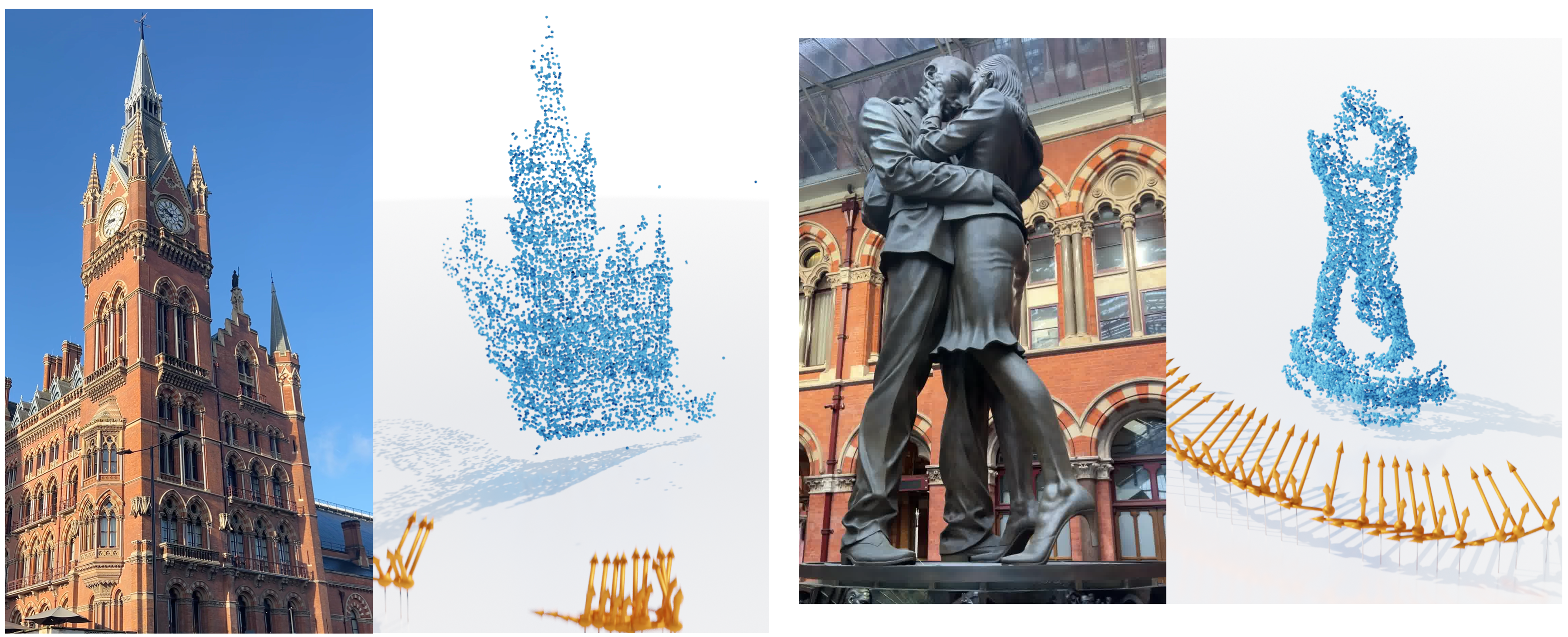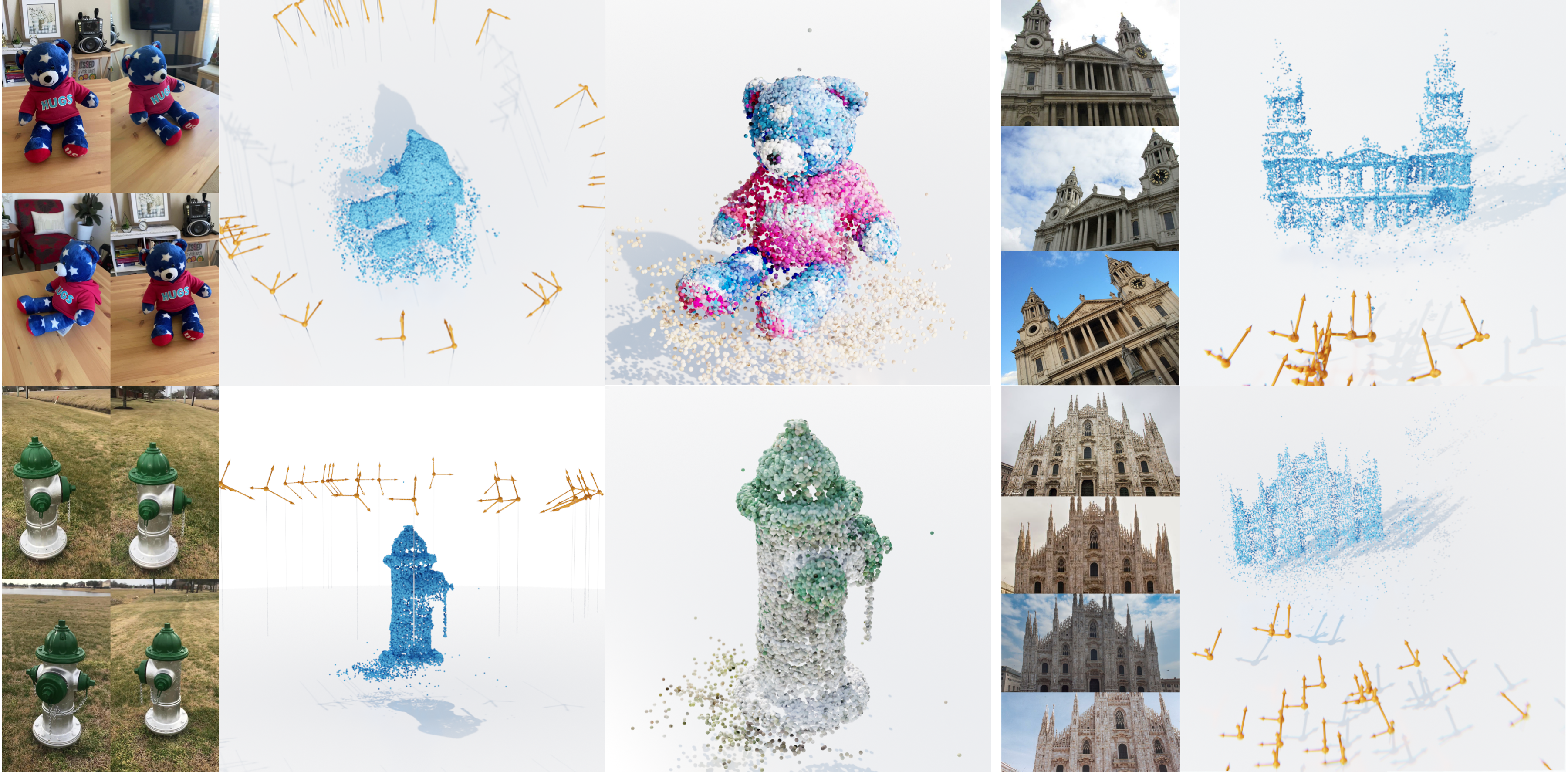Abstract
Structure-from-motion (SfM) is a long-standing problem in the computer vision community, which aims to reconstruct the camera poses and 3D structure of a scene from a set of unconstrained 2D images. Classical frameworks solve this problem in an incremental manner by detecting and matching keypoints, registering images, triangulating 3D points, and conducting bundle adjustment. Recent research efforts have predominantly revolved around harnessing the power of deep learning techniques to enhance specific elements (e.g., keypoint matching), but are still based on the original, non-differentiable pipeline. Instead, we propose a new deep SfM pipeline VGGSfM, where each component is fully differentiable and thus can be trained in an end-to-end manner. To this end, we introduce new mechanisms and simplifications. First, we build on recent advances in deep 2D point tracking to extract reliable pixel-accurate tracks, which eliminates the need for chaining pairwise matches. Furthermore, we recover all cameras simultaneously based on the image and track features instead of gradually registering cameras. Finally, we optimise the cameras and triangulate 3D points via a differentiable bundle adjustment layer. We attain state-of-the-art performance on three popular datasets, CO3D, IMC Phototourism, and ETH3D.
Method
Our method extracts 2D tracks from input images, reconstructs cameras using image and track features, initializes a point cloud based on these tracks and camera parameters, and applies a bundle adjustment layer for reconstruction refinement. The whole framework is fully differentiable.

In-the-wild Application
Reconstruction of In-the-wild Photos with VGGSfM, displaying estimated point clouds (in blue) and cameras (orange).

Qualitative Visualization
Camera and point-cloud reconstructions of VGGSfM on Co3D (left) and IMC Phototourism (right).

Tracking
In each row, the left-most frame contains the query image with query points (crosses). The predicted track points (dots) are shown to the right. The top-right part also highlights our track-point confidence predictions, illustrated as ellipses with extent proportional to the predicted variance.
